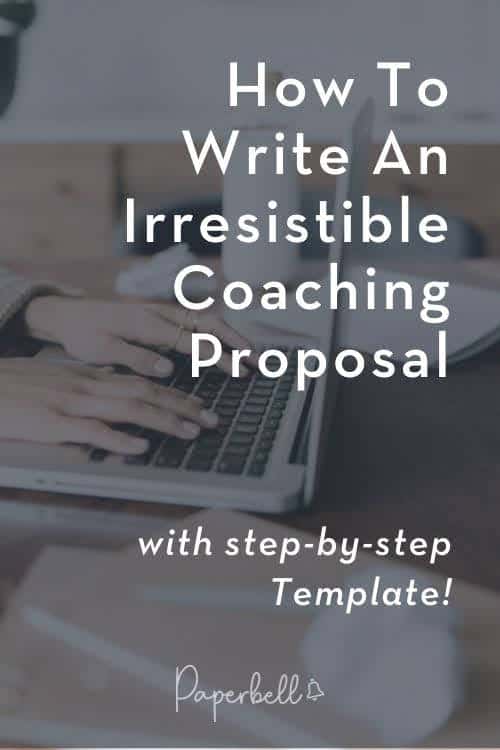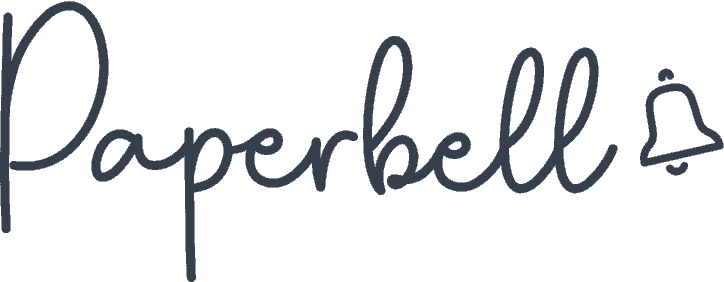Writing a convincing proposal is one of the most important steps in your sales process as a coach. Yet, the sound of it makes many cringe.
You likely didn’t pursue a coaching career because selling was your ultimate calling. But you also know that your good vibes and charm aren’t enough to close the deal and get you more clients.
So, in this guide, we’ve put together everything you need to know about writing a convincing coaching proposal that your clients will wholeheartedly say yes to.
When Is the Right Time to Drop Your Coaching Proposal?
Your coaching proposal should, ideally, be sent to your prospect within 1-3 business days after your discovery session. It’s best not to send a proposal to a client before you talk to them personally and explore what they need.
[ Read: 9 Client-Converting Questions to Ask In Every Discovery Session ]
A discovery session is key to evaluating whether the client is the right match for your services. It’s also an opportunity to see if they feel comfortable working with you.
It’s where your prospect decides if you’re the kind of professional they want to work with and whether you have synergy. It will also reveal whether your qualifications are right for them or if you need to refer them to someone else, for example, a nutritionist or mental health professional.
The clearer you are on your ideal client profile, the easier you can use discovery sessions to make an impression and assess who you’re about to take on as a client. It’s a two-way street.
Notice that we mentioned one discovery session in singular. If you offer multiple free clarity sessions to your prospects, you’re technically working for free because you’re not utilizing that one call effectively.
The only reason you might want to offer a second discovery session is if, for some unforeseen reason, you or your client need to interrupt the call and leave before covering everything.
Once you have a clear sense of your client’s needs and are confident you have the right package for them, it’s time to send your proposal.
Optionally, you can skip writing a proposal and send the client straight to your landing page. Paperbell makes it easy to set up an online shop for your coaching services; here’s an example.

We also recommend our free template pack for coaches to create a stunning website and package for your services.
If you’re sticking to proposal writing, it’s best to explain your packages to the client in your discovery session itself. This will set clear expectations and make it more likely for them to sign with you.
Here’s what to include in your email.
6 Elements of a Winning Coaching Proposal
Whether you send a short email summary or a two-page brochure with your packages, your coaching proposal should always include these six elements.
The key is knowing which parts of your offer to personalize and which ones to templatize. This way you can make them effective and authentic at the same time—while also saving time.
So, let’s look at how you can incorporate these elements into your proposal email.
1. Reference Your Discovery Call
A small personal touch is a much better way to start an email than “So here’s how much I charge,” isn’t it?
Something simple like “I enjoyed our conversation the other day” or “Thank you for taking the time to tell me your story” would do.
You can keep it short and genuine to refer back to your conversation and establish rapport with the client.
2. Tell Them Why They Qualify
Your prospects should know that this is not a copy-and-paste email you’re sending to every single soul on the planet (Ahem, it isn’t right? Just checking…) but a thought-through plan for their unique problems.
Tell them how the package you’re pitching can help them with their exact challenges. Explain briefly how the personal objectives your coachee described in the discovery session can be reached through your coaching process.
3. Share Your Coaching Packages With Them
From here on, your proposal can be templatized. You only need to write it once for each package or client profile, and you can reuse it with minor tweaks (Phew!) Ideally, you should share only one package with your new prospect based on the exact solution they’re looking for.
[ Read: The 4 Pillars of Sold-Out Life Coaching Packages ]
You’ll have an easy job here if your coaching packages are well-structured. Add a summary to your email, or share a more fleshed-out version of your package in a deck or on your website.
Your package should always include the duration, the outcome, the format, and the pricing of your coaching program. If your prospect qualifies for a discount, this is the time to tell them about your special rate or give them a promo code for your checkout page.
If you offer more complex packages in various formats or a semi-automated program flow, it’s worth including an FAQ at the end of your presentation or webpage.
Only use this section if necessary; for example, if you get asked the same questions repeatedly about your packages.
4. Outline the Next Steps
After you’ve pitched your offer, you need to answer the obvious question: Now what?
Guide your new client on how they can get started with the process, such as making the payment, signing the contract, and booking the appointment for their first session.
With Paperbell, you can save a lot of explaining and back and forth by sending them a single link to digital contract signing, payment, and scheduling. Once they sign up, they can pay the fees right then and there and schedule their first session ONLY once they’ve paid.
The simpler your process, the more likely they’ll sign their name on the dotted line.
5. Give Them a Deadline
The purpose of this is not to put pressure on your client but to, once again, set boundaries as a professional service provider that your clients need to respect to work with you.
You don’t necessarily have to use scarcity marketing (although it does work); you can simply ask them to get back to you before a certain date to secure their spot at your offered price. You can also set a deadline for your package to expire automatically using Paperbell.
Your time is valuable, and you want to work with people who are decisive and committed to their transformation, so it’s only fair.
6. Be Open to Questions
Last but not least, stay open to questions.
If you’ve done a great job with your proposal, there probably won’t be any. If there are, you can add them to your FAQ later or take the feedback to simplify your proposal.
Once these six elements are present in your proposal, it’s time to sign off and wait for their reply.
Free Coaching Proposal Template
Here’s a sample proposal you can personalize for your own coaching business.
Dear [NAME],
I really enjoyed our conversation yesterday. Thank you for taking the time to tell me about your [AREA OF COACHING] goals!
Based on what you told me about your [AREA OF COACHING], I believe the best strategy to achieve these goals is through [SOLUTION].
I have worked with clients like you who [CLIENT’S PROBLEM], and over the years I’ve developed a proven strategy to [SOLUTION].
Here’s a recap of the [PACKAGE NAME] Program I shared with you during our conversation yesterday:
[COACHING PACKAGE SUMMARY OR WEBSITE]
If you’d like to work with me, you can review the contract for our collaboration and settle the payment here:
[LINK TO YOUR PAPERBELL LANDING PAGE]
After that, you can schedule your first session with me on the same page.
If you have any questions, please don’t hesitate to reach out to me.
Looking forward to working with you,
[SIGN OFF]
3 Common Mistakes to Avoid in a Coaching Proposal
Here are the three most common pitfalls of writing a proposal about your coaching services and how to avoid them.
1. Being Too “Salesy”
Let’s be honest: We’re all bombarded with ads left and right, and we’re tired of being sold to. Authenticity, especially in coaching, is more important than ever.
Stay genuine and down-to-earth in your communication if you don’t want to sound like a used car salesman with the magic pill for transformation.
Treat every prospect like a new relationship, not just a customer. Be straightforward about your coaching process; the right people will say yes.
2. Writing a Vague Proposal
One of the most common mistakes coaches make is failing to address their client’s problem and articulate the solution they offer to solve it.
What sets a “nice-to-have” coach apart from the only professional they can possibly think of working with is being super specific about the outcome of your program.
Draw from the testimonials of your previous clients, and use their language to describe what your packages offer.
3. Forgetting to Follow up
We left the most important one for the end. We tend to think that no answer means no. But your email might get lost in a full inbox or opened at a red light and then forgotten in the whirlwind of a busy Monday.
Following up is not desperate—when done professionally.
A one-line email is enough to bump up the conversation in your prospect’s mailbox and ask for a definite yes or no. It might go like this:
“Hey [NAME], did you have a chance to make a decision about [COACHING PROGRAM]? If you have any questions, let me know.”
That’s it. Send this to your potential client before the deadline you set in your proposal, and keep it to no more than two follow-up emails.
If you still don’t hear back from them, you can move on, knowing you’ve done everything. And if you do, this simple gesture might turn that ‘maybe’ into a ‘yes’ and another story of transformation.

Editor’s Note: This post was originally published in July 2021 and has since been updated for accuracy.









